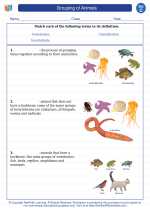Grouping of Animals
Animals are categorized into different groups based on their common characteristics. This classification helps scientists and researchers understand the diversity of the animal kingdom. There are several ways to group animals, including by their physical features, habitats, and evolutionary relationships.
Here are the main ways animals are grouped:
Classification by Physical Features
Animals can be grouped based on their physical characteristics such as body covering, number of limbs, and method of reproduction.
Vertebrates and Invertebrates
Vertebrates are animals with a backbone, while invertebrates do not have a backbone. Examples of vertebrates include mammals, birds, reptiles, amphibians, and fish, while invertebrates include insects, arachnids, mollusks, and more.
Mammals, Birds, Reptiles, Amphibians, and Fish
These are the five main groups of vertebrates. Mammals have hair or fur, birds have feathers, reptiles have scales, amphibians have moist skin, and fish have gills and fins.
Classification by Habitat
Animals can also be grouped based on the type of environment they live in, such as land, water, or air.
Terrestrial, Aquatic, and Aerial Animals
Terrestrial animals live on land, aquatic animals live in water, and aerial animals live in the air. Each group has adapted to its specific habitat in different ways.
Classification by Evolutionary Relationships
Scientists use evolutionary relationships to group animals based on their genetic and evolutionary history.
Phylum, Class, Order, Family, Genus, and Species
This is the hierarchical system used to classify animals based on their evolutionary relationships. For example, humans belong to the phylum Chordata, class Mammalia, order Primates, family Hominidae, genus Homo, and species Homo sapiens.
Understanding how animals are grouped helps us appreciate the diversity of the animal kingdom and the unique characteristics of each group.
Study Guide
- What are the two main groups animals can be classified into based on their physical features?
- List the five main groups of vertebrates.
- Give examples of terrestrial, aquatic, and aerial animals.
- Explain the hierarchical system used to classify animals based on their evolutionary relationships.
◂Science Worksheets and Study Guides Third Grade. Grouping of Animals
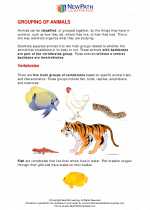
 Activity Lesson
Activity Lesson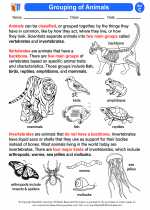
 Worksheet/Answer key
Worksheet/Answer key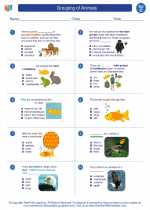
 Worksheet/Answer key
Worksheet/Answer key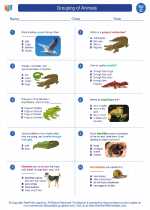
 Worksheet/Answer key
Worksheet/Answer key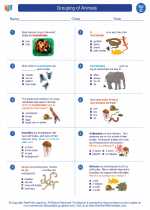
 Worksheet/Answer key
Worksheet/Answer key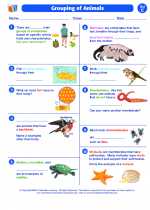
 Vocabulary/Answer key
Vocabulary/Answer key